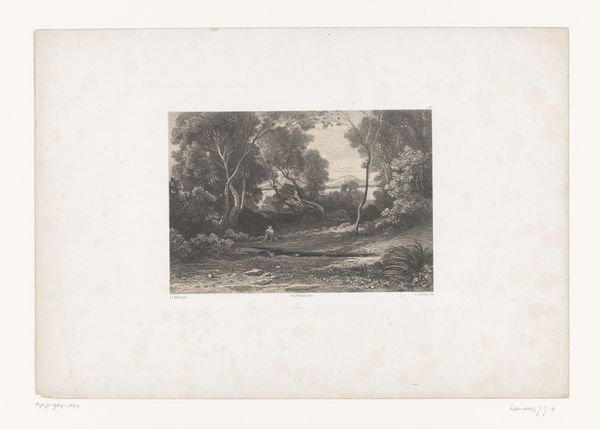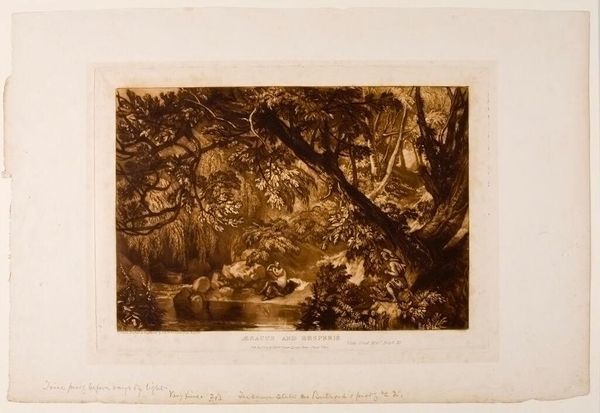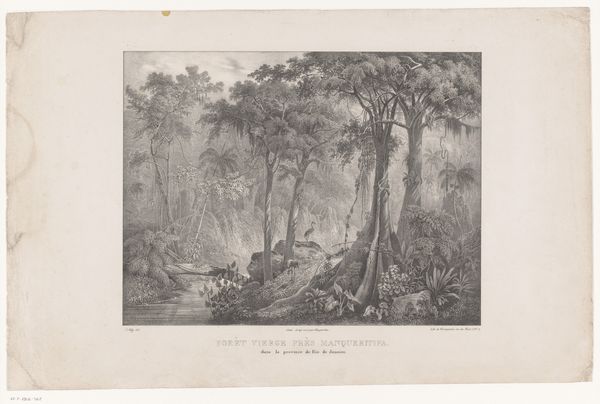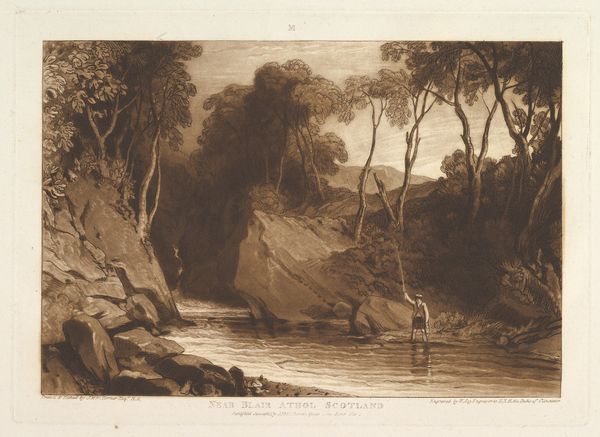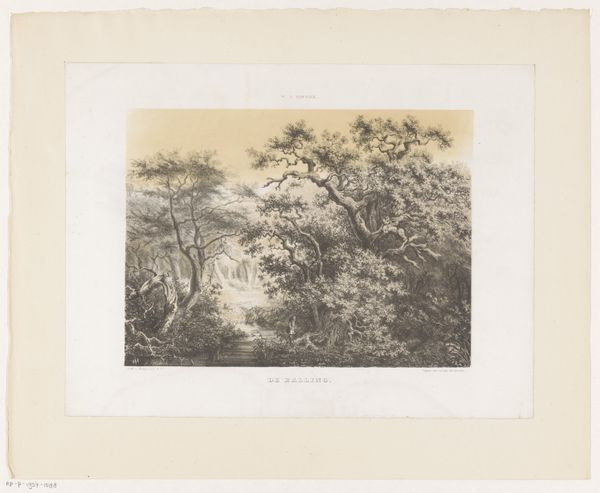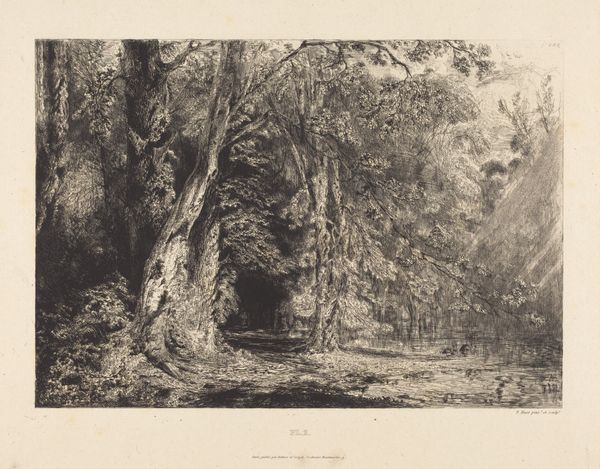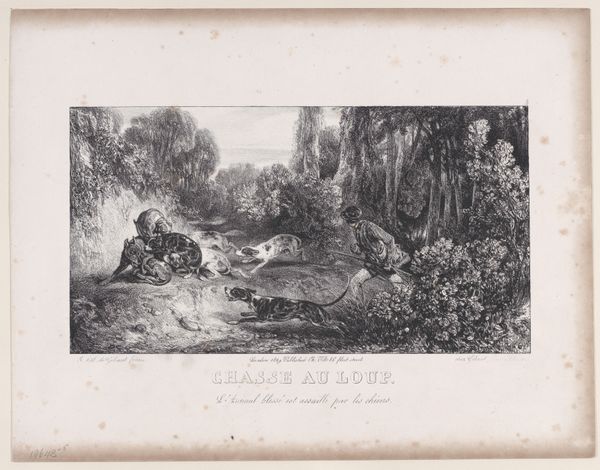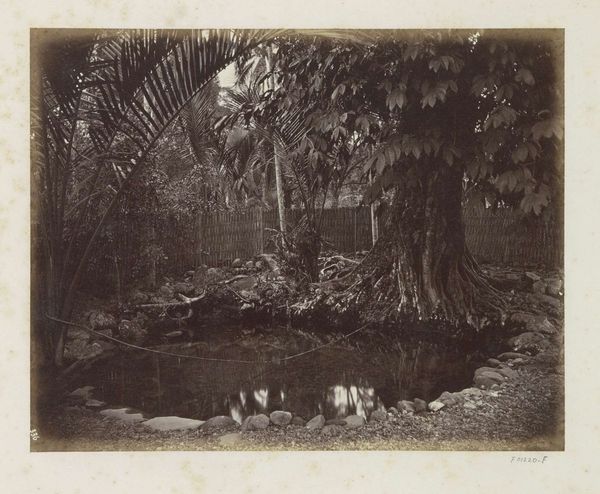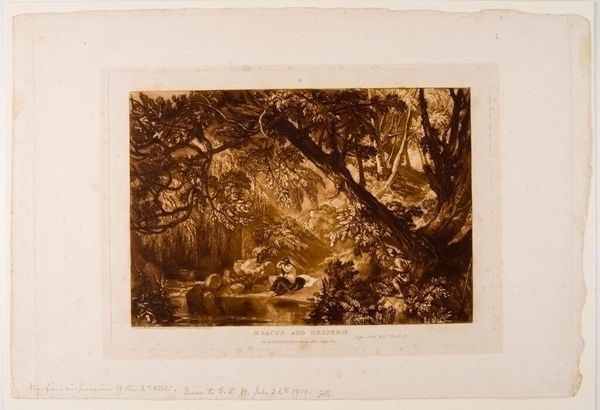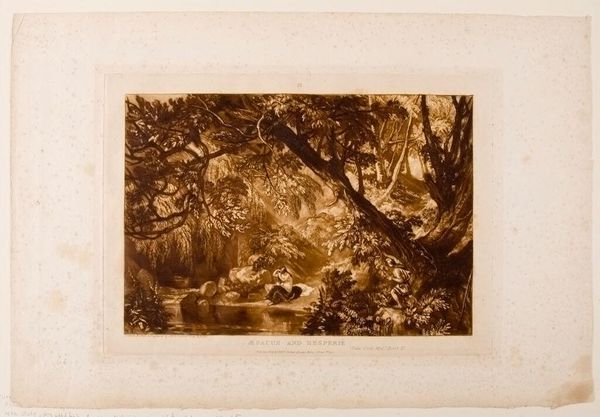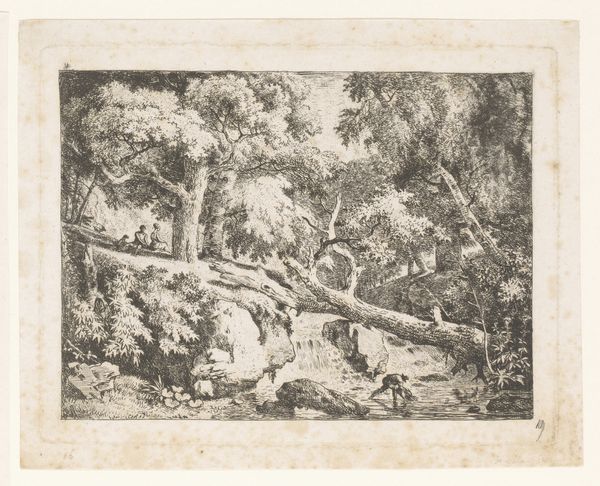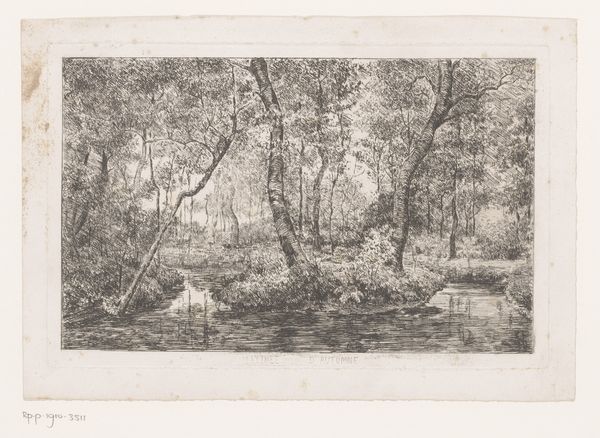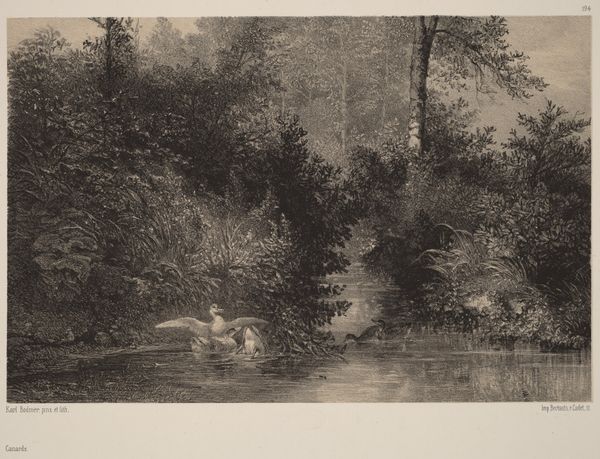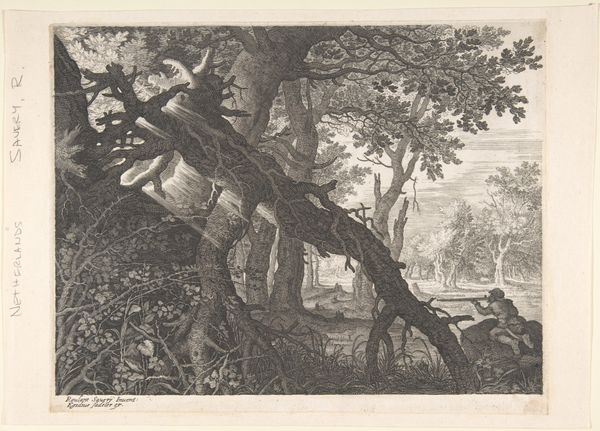
Aesacus and Hesperie, Vide Ovid Metamorphosis, Book XI (Liber Studiorum, part XIII, plate 66) 1819
0:00
0:00
drawing, print, etching
#
drawing
#
narrative-art
# print
#
etching
#
landscape
#
romanticism
#
watercolour illustration
Dimensions: plate: 7 1/16 x 10 3/16 in. (17.9 x 25.9 cm) sheet: 8 5/16 x 11 1/2 in. (21.1 x 29.2 cm)
Copyright: Public Domain
Curator: This is "Aesacus and Hesperie" by J.M.W. Turner, an etching from 1819, now held at the Metropolitan Museum of Art. Editor: What immediately strikes me is its overwhelming melancholic tone; a muted, monochromatic study in browns and tans that somehow evokes both warmth and sorrow. Curator: Indeed. Turner draws on Ovid’s Metamorphoses here, portraying the tragic tale. Hesperie, a nymph, dies from a snake bite, leading to Aesacus’s profound grief and eventual transformation into a diving bird. Editor: So, the formal composition heavily mirrors the narrative: note the diagonal slash of the large tree bisecting the frame. The bright area, drawing focus toward Hesperie, literally contrasts sharply with the darkened areas that seem to ‘consume’ Aesacus. It’s a kind of visual foreshadowing. Curator: And it’s important to note the weeping willow in the upper left. Symbolically, this speaks to mourning and remembrance, elements common across cultures in grappling with loss. Hesperie sits on a bank that almost becomes her grave stone. Editor: I see how the textured hatching really creates the dense forest, claustrophobic and alive; but observe how the light seems to fracture— almost desperately – on the water’s surface. Is Turner suggesting that the promise of illumination exists even in the face of tragic fate? Curator: Perhaps. And one must consider Romanticism’s broader fascination with nature, seeing in it reflections of intense human emotion. Aesacus, heartbroken, blends back into the natural world through his transformation, embodying that intersection. Editor: Considering Romanticism, and knowing Turner’s skill, I initially find the tonal palette surprisingly limited. However, in that simplicity is also profound visual elegance. The etching’s lines capture form and, cleverly, raw feeling. Curator: Understanding Turner through this work offers insights into how enduring themes such as love, grief, and metamorphosis can be subtly portrayed. Editor: It is truly a piece where the artist wields not only his tools, but also symbolism, tone, and contrast, ultimately making tangible a rather enduring human struggle.
Comments
No comments
Be the first to comment and join the conversation on the ultimate creative platform.
